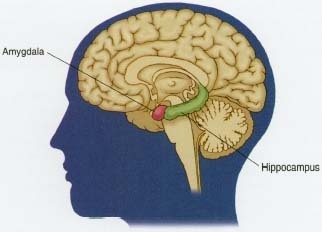Posttraumatic stress disorder (PTSD) is an anxiety disorder that can occur after you have been through a traumatic event. A traumatic event is something horrible and scary that you see or that happens to you. During this type of event, you think that your life or others' lives are in danger. You may feel afraid or feel that you have no control over what is happening.
A life-threatening event can develop PTSD. These events can include:
*Combat or military exposure
*Child sexual or physical abuse
*Terrorist attacks
*Sexual or physical assault
*Serious accidents, such as a car wreck
*Natural disasters, such as a fire, tornado, hurricane, flood, or earthquake.
*Child sexual or physical abuse
*Terrorist attacks
*Sexual or physical assault
*Serious accidents, such as a car wreck
*Natural disasters, such as a fire, tornado, hurricane, flood, or earthquake.
After the event, you may feel scared, confused, or angry. If these feelings don't go away or they get worse, you may have PTSD. These symptoms may disrupt your life, making it hard to continue with your daily activities.
What are the symptoms?Symptoms of PTSD can be terrifying. They may disrupt your life and make it hard to continue with your daily activities. It may be hard just to get through the day.
PTSD symptoms usually start soon after the traumatic event, but they may not happen until months or years later. They also may come and go over many years. If the symptoms last longer than 4 weeks, cause you great distress, or interfere with your work or home life, you probably have PTSD.
There are four types of PTSD symptoms:
*Reliving the event
*Avoiding situations that remind you of the event
*Feeling numb*Feeling keyed up
What causes PTSD?*Avoiding situations that remind you of the event
*Feeling numb*Feeling keyed up
Briefly explain how memory and emotion relate to PTSD.














